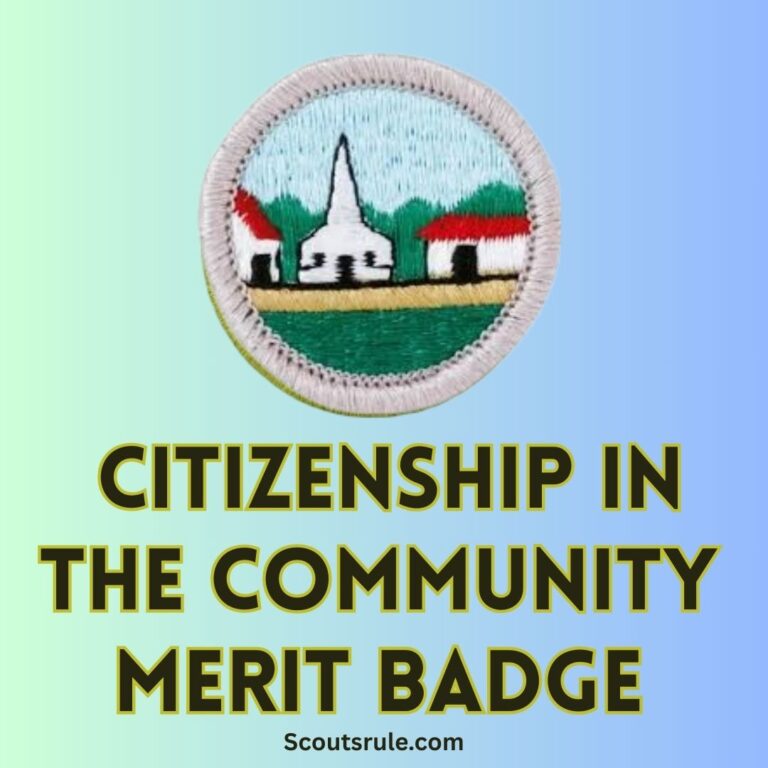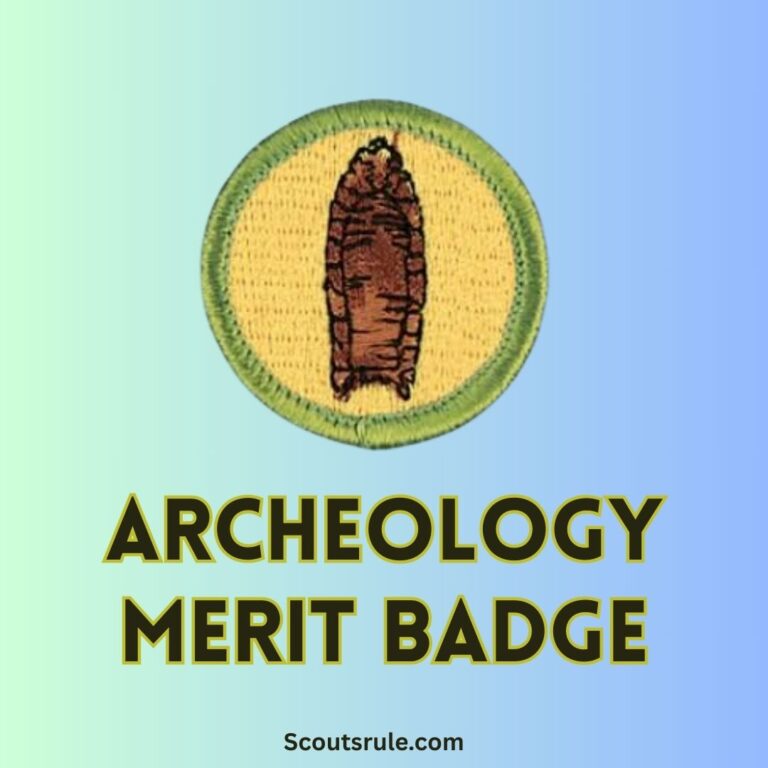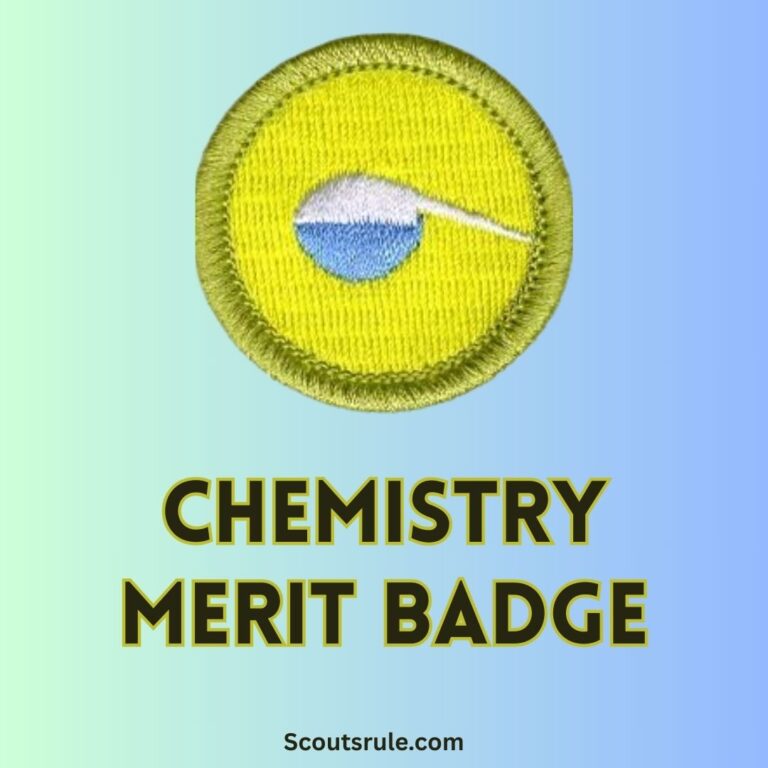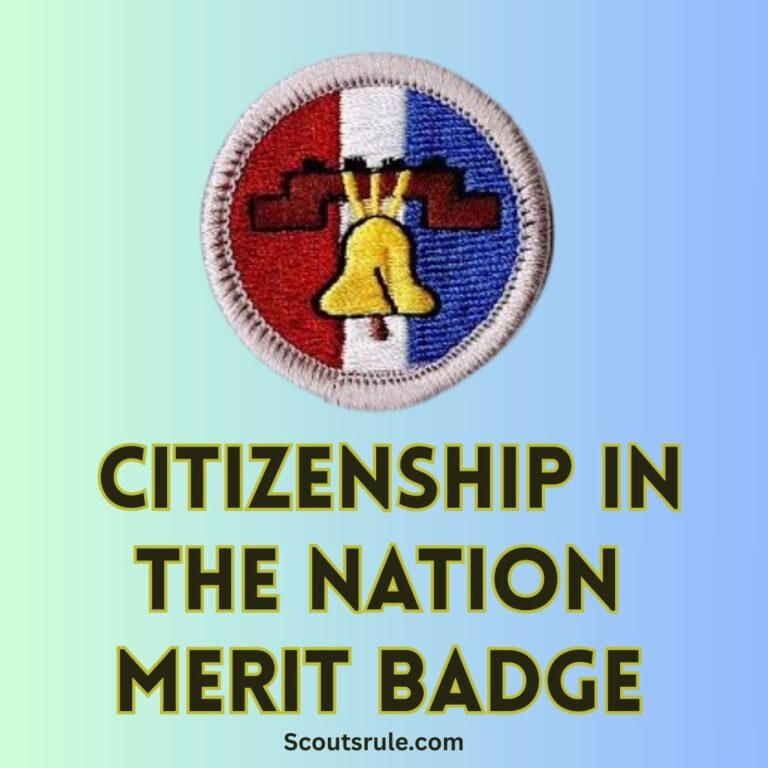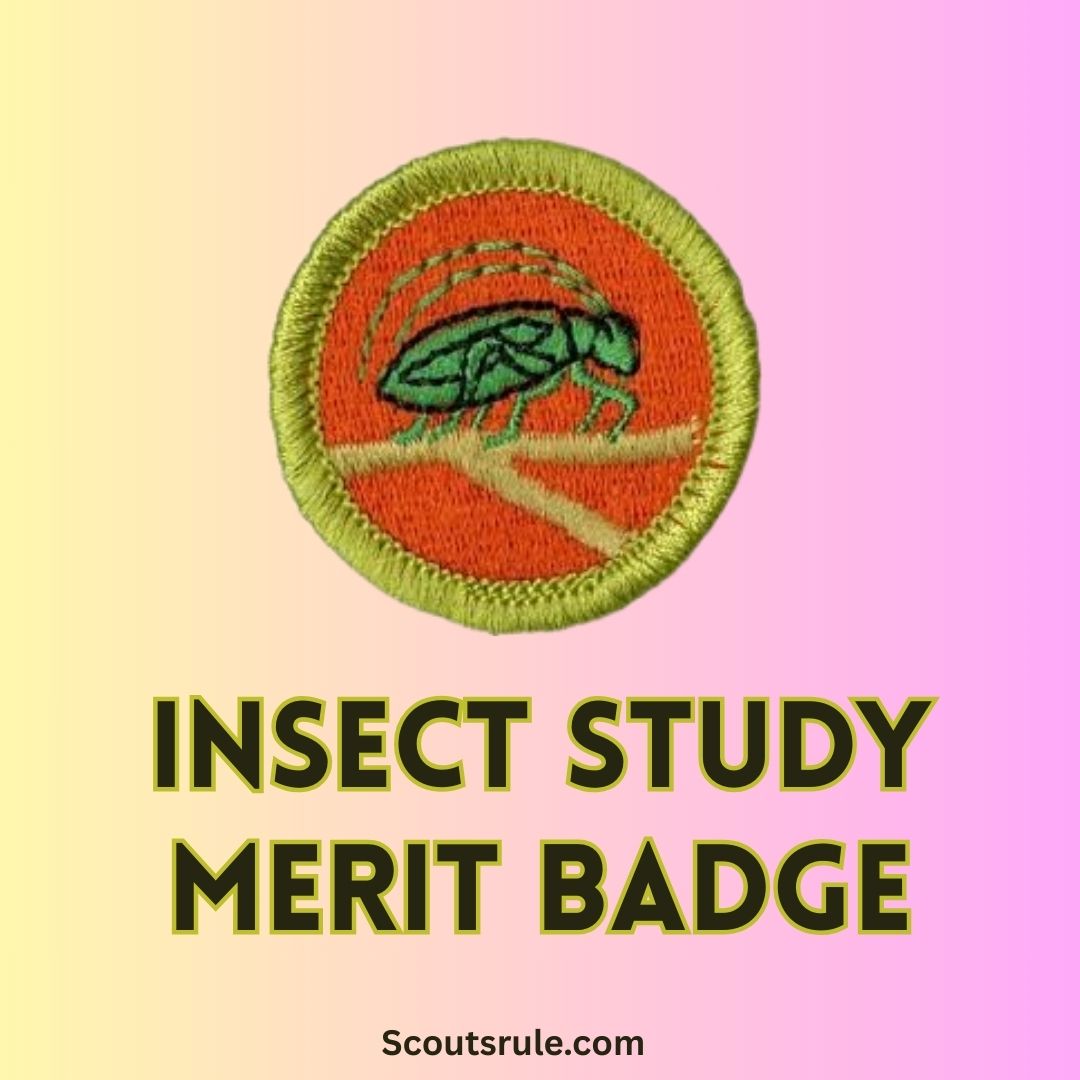
Post Contents
- Exploring the World of Insects
- Requirements for the Insect Study Merit Badge
- Tips for Earning the Insect Study Merit Badge
- Fun Facts About Insects
- Hazards of Ants and Bees
- Health Concerns of Ants and Bees
- Anatomy of an Insect
- Life Cycles of a Butterfly and a Grasshopper
- Leave No Trace Seven Principles and the Outdoor Code
- How to Observe 20 Different Insect Species
- What Makes Social Insects Different?
- What Makes Solitary Insects Different?
- Conclusion
- Insect Study Merit Badge FAQs
Exploring the World of Insects
Insects are among the most diverse and fascinating creatures on Earth, playing vital roles in ecosystems as pollinators, decomposers, and food sources for other animals. The Insect Study Merit Badge offers scouts an opportunity to dive into the world of entomology, learning about insect anatomy, behavior, and their importance to the environment. This guide will walk you through the requirements and provide tips to help you earn this badge while gaining a deeper appreciation for these tiny yet mighty creatures.
Requirements for the Insect Study Merit Badge
To earn the Insect Study Merit Badge, scouts must complete a series of tasks that include understanding insect anatomy, observing insect species, and exploring their ecological roles. Here’s a breakdown of the key requirements:
1. Safety First
Before starting your insect study, it’s essential to understand the potential hazards associated with insects like ants and bees. Scouts must:
- Identify Hazards: Learn about the risks of insect bites, stings, and allergic reactions.
- Prevention and Response: Understand how to avoid provoking insects and how to respond to bites or stings, including treating anaphylactic shock.
2. Anatomy of Insects
Scouts must learn about the physical characteristics that define insects and distinguish them from other animals. Key topics include:
- How Insects Differ from Other Animals: Insects have three main body parts (head, thorax, abdomen), six legs, and often wings.
- Comparison with Millipedes and Spiders: Unlike insects, millipedes have many body segments and legs, while spiders have two body segments and eight legs.
- Main Parts of an Insect: Identify the head, thorax, abdomen, antennae, and compound eyes.
- Major Orders of Insects: Learn about groups like beetles (Coleoptera), butterflies (Lepidoptera), and ants (Hymenoptera).
3. Life Cycles
Understanding insect life cycles is crucial. Scouts must:
- Compare Life Histories: Study the life cycles of a butterfly (complete metamorphosis) and a grasshopper (incomplete metamorphosis).
- Highlight Differences: Note that butterflies undergo four stages (egg, larva, pupa, adult), while grasshoppers skip the pupal stage.
4. Observation and Documentation
Observation is a key component of this badge. Scouts must:
- Observe 20 Different Insect Species: Plan and document observations of insects in their natural habitats.
- Choose Different Orders: Ensure a variety of insect types are included.
- Record Behavior: Note feeding, movement, and interactions with the environment.
5. Social and Solitary Insects
Scouts must explore the differences between social insects (e.g., ants, bees) and solitary insects (e.g., butterflies, beetles):
- Social Insects: Live in colonies with division of labor, such as worker bees and queen ants.
- Solitary Insects: Live independently, focusing on individual survival and reproduction.
6. Ecology and Conservation
Insects play critical roles in ecosystems. Scouts must:
- Understand Their Roles: Learn how insects contribute to pollination, decomposition, and the food web.
- Explore Threats: Study challenges like habitat loss, pesticide use, and climate change.
- Conservation Efforts: Discover ways to protect insect populations, such as planting pollinator-friendly gardens.
7. Insects and People
Scouts must examine the relationship between insects and humans, including:
- Benefits: Pollination, pest control, and production of honey and silk.
- Challenges: Crop damage, disease transmission, and invasive species.
8. Careers and Hobbies in Entomology
Scouts should explore opportunities in the field of entomology, such as:
- Careers: Research, pest management, and conservation biology.
- Hobbies: Butterfly gardening, beekeeping, and insect photography.
Tips for Earning the Insect Study Merit Badge
- Plan Your Observations: Choose diverse habitats like gardens, forests, and wetlands to observe a variety of insects.
- Use Tools: Bring a magnifying glass, notebook, and camera to document your findings.
- Stay Safe: Wear protective clothing and avoid disturbing insects unnecessarily.
- Engage with Experts: Visit a local entomologist, museum, or insect exhibit to deepen your understanding.
Fun Facts About Insects
- Diverse Species: There are over 1 million known insect species, making them the most diverse group of animals on Earth.
- Vital Pollinators: Bees and butterflies are essential for pollinating crops and wild plants.
- Masters of Metamorphosis: Insects like butterflies and beetles undergo dramatic transformations during their life cycles.
- Social Superstars: Ants and bees have complex social structures, with specialized roles for each member of the colony.
- Record Breakers: The Goliath beetle is one of the heaviest insects, while the dragonfly is among the fastest flyers.
Hazards of Ants and Bees
1. Preventing Hazards of Ants
- Avoid Provocation: Avoid disturbing anthills or walking barefoot in areas where ants are active.
- Food Storage: Keep food sealed and properly stored, as ants are attracted to crumbs and sugary substances.
- Protect Yourself: Wear close-toed shoes and long clothing during outdoor activities to avoid bites.
2. Preventing Hazards of Bees
- Stay Calm: If a bee approaches, avoid swatting or sudden movements. Bees sting when they feel threatened.
- Avoid Scents: Avoid wearing strong fragrances or bright colors that might attract bees.
- Cover Food and Drinks: Bees are attracted to open food and sugary beverages, so keep them covered.
Health Concerns of Ants and Bees
1. Health Concerns of Ants
- Bites: Ant bites, especially from fire ants, can cause itching, swelling, and discomfort.
- Allergic Reactions: Some individuals may experience severe allergic reactions to ant bites, including difficulty breathing and swelling.
2. Health Concerns of Bees
- Stings: Bee stings can result in localized pain, redness, and swelling.
- Anaphylaxis: A small percentage of people may develop anaphylaxis, a life-threatening allergic reaction that requires immediate medical attention.
Anatomy of an Insect
(a) How Insects Are Different from Other Animals
- Insects have three main body parts (head, thorax, abdomen), six legs, and often wings, setting them apart from most animals.
(b) How Insects Are Different from Millipedes and Spiders
- Millipedes have many body segments with multiple pairs of legs per segment.
- Spiders have two body parts (cephalothorax and abdomen) and eight legs, unlike insects’ three-part body and six legs.
(c) The Main Parts of an Insect
- Head: Contains the eyes, antennae, and mouthparts.
- Thorax: Middle section that supports the legs and wings.
- Abdomen: Rear section housing organs like the digestive and reproductive systems.
(d) Characteristics that Distinguish the Major Orders of Insects
- Coleoptera (Beetles): Hardened forewings and chewing mouthparts.
- Lepidoptera (Butterflies/Moths): Scaled wings and a coiled proboscis for feeding.
- Hymenoptera (Ants, Bees, Wasps): Social behavior and often a stinger.
- Orthoptera (Grasshoppers, Crickets): Powerful hind legs for jumping and straight wings.
Life Cycles of a Butterfly and a Grasshopper
Butterfly
- Complete Metamorphosis: Egg → Larva (caterpillar) → Pupa (chrysalis) → Adult butterfly.
Grasshopper
- Incomplete Metamorphosis: Egg → Nymph (miniature version of adult) → Adult grasshopper.
How Are They Different?
Butterflies go through a complete transformation with a pupal stage, while grasshoppers skip this phase and gradually develop into adults.
Leave No Trace Seven Principles and the Outdoor Code
Leave No Trace Seven Principles
- Plan ahead and prepare.
- Travel and camp on durable surfaces.
- Dispose of waste properly.
- Leave what you find.
- Minimize campfire impact.
- Respect wildlife.
- Be considerate of other visitors.
Outdoor Code
- Be clean, careful with fire, considerate, and conservation-minded.
How I Followed the Leave No Trace and Outdoor Code During Insect Study
- Avoided disturbing natural habitats while observing insects.
- Left no trash behind and did not collect insects to ensure minimal impact on the environment.
How to Observe 20 Different Insect Species
1. Plan Your Observation
Choose locations with diverse insect populations, such as gardens, forests, and wetlands.
2. Choose Different Insect Orders
Include species from a variety of orders, such as Coleoptera (beetles), Lepidoptera (butterflies), and Hymenoptera (bees).
3. Observe the Insects
Watch their behavior, noting movements, feeding habits, and interactions with the environment.
4. Document Your Observations
Take notes and photos, and label each species with details about its order, location, and behavior.
Example of 20 Different Insect Species
- Monarch butterfly (Lepidoptera)
- Ladybug (Coleoptera)
- Honeybee (Hymenoptera)
- Carpenter ant (Hymenoptera)
- Dragonfly (Odonata)
- Grasshopper (Orthoptera)
- Housefly (Diptera)
- Mosquito (Diptera)
- Praying mantis (Mantodea)
- Cicada (Hemiptera)
- Firefly (Coleoptera)
- Bumblebee (Hymenoptera)
- Stag beetle (Coleoptera)
- Stick insect (Phasmatodea)
- Green lacewing (Neuroptera)
- Silverfish (Zygentoma)
- Termite (Isoptera)
- Wasp (Hymenoptera)
- Katydid (Orthoptera)
- Water strider (Hemiptera)
What Makes Social Insects Different?
- Social insects, such as ants and bees, live in colonies with division of labor among workers, queens, and drones.
- They communicate through pheromones and perform collective tasks like building nests and caring for young.
What Makes Solitary Insects Different?
- Solitary insects, like butterflies and beetles, live independently, focusing on individual survival and reproduction.
- They do not rely on group cooperation or division of labor.
By completing these requirements, scouts not only earn the Insect Study Merit Badge but also gain a deeper respect and understanding of insects and their importance to ecosystems. 🐜🦋✨
Conclusion
The Insect Study Merit Badge is a gateway to understanding the incredible world of insects and their importance to ecosystems. By completing the requirements, scouts gain valuable skills in observation, research, and conservation while fostering a deeper appreciation for nature. Whether you’re marveling at a butterfly’s metamorphosis or observing the teamwork of an ant colony, this badge offers endless opportunities for discovery and learning. Ready to dive into the world of insects? Let the adventure begin! 🦋🐜✨
Insect Study Merit Badge FAQs
1. Who can earn the Insect Study Merit Badge?
Any registered Scout in the Boy Scouts of America who has an interest in insects and meets the badge requirements can earn the Insect Study Merit Badge.
2. Do I need prior knowledge of insects to earn this badge?
No prior knowledge is required. This badge is designed to introduce Scouts to the study of insects, their characteristics, and their role in the ecosystem.
3. What will I learn while earning this badge?
Scouts will learn about insect anatomy, classification, life cycles, behaviors, and their importance to the environment. They will also observe and collect insects as part of their studies.
4. Do I have to collect live insects?
While insect collection is encouraged to help with identification, Scouts may choose to use detailed photographs or drawings instead of collecting live specimens if local regulations or personal preference apply.
5. How long does it take to complete this badge?
The time varies depending on how quickly you can observe and document insects. Some Scouts may complete it in a few weeks, while others may take a full season to study insect life cycles.
6. Where is the best place to find insects for observation?
Insects can be found in gardens, parks, forests, near water sources, and even in urban areas. Scouts should observe insects in their natural habitats while being careful not to disturb ecosystems.
7. What are the best tools for studying insects?
A field guide, magnifying glass, insect net, collection jars, and a notebook for documentation are useful tools for studying insects.
8. Are there any safety concerns when studying insects?
Yes. Some insects can bite, sting, or be poisonous. Scouts should wear appropriate clothing, be cautious when handling insects, and avoid disturbing nests or hives.
9. Do I need to keep a journal for this merit badge?
Yes. Scouts are required to keep a journal detailing their observations, including descriptions, locations, behaviors, and sketches or photos of insects they study.
10. Can I use digital photos instead of drawings in my journal?
Yes. While drawings are encouraged, digital photos are an acceptable way to document insects.
11. What are the benefits of earning this merit badge?
This badge helps Scouts develop an appreciation for insects and their role in nature. It can also be beneficial for those interested in biology, entomology, or conservation careers.
12. Do I need to give a presentation as part of this badge?
Yes. Scouts must share what they have learned about insects with others, such as their troop, family, or community.
13. Can I work on this badge with a group?
Yes! While each Scout must complete individual requirements, studying insects as a group can be a fun and educational experience.
14. What is the service project requirement for this badge?
Scouts must participate in an insect-related conservation project, such as creating a pollinator garden, building a butterfly house, or assisting with habitat restoration.
15. Where can I find a merit badge counselor for Insect Study?
Check with your Scoutmaster, troop leaders, or local BSA council to find a registered merit badge counselor who specializes in entomology or insect study.
16. What happens after I complete all the requirements?
Once all requirements are met, your merit badge counselor will review your work, sign off on your progress, and you can submit your completed Blue Card to your Scoutmaster for final approval and recognition.

Hi, Robin here, A former lead Scout and here I share my inspiring stories about USA Scouts, leadership, adventure, how to guides and more.

